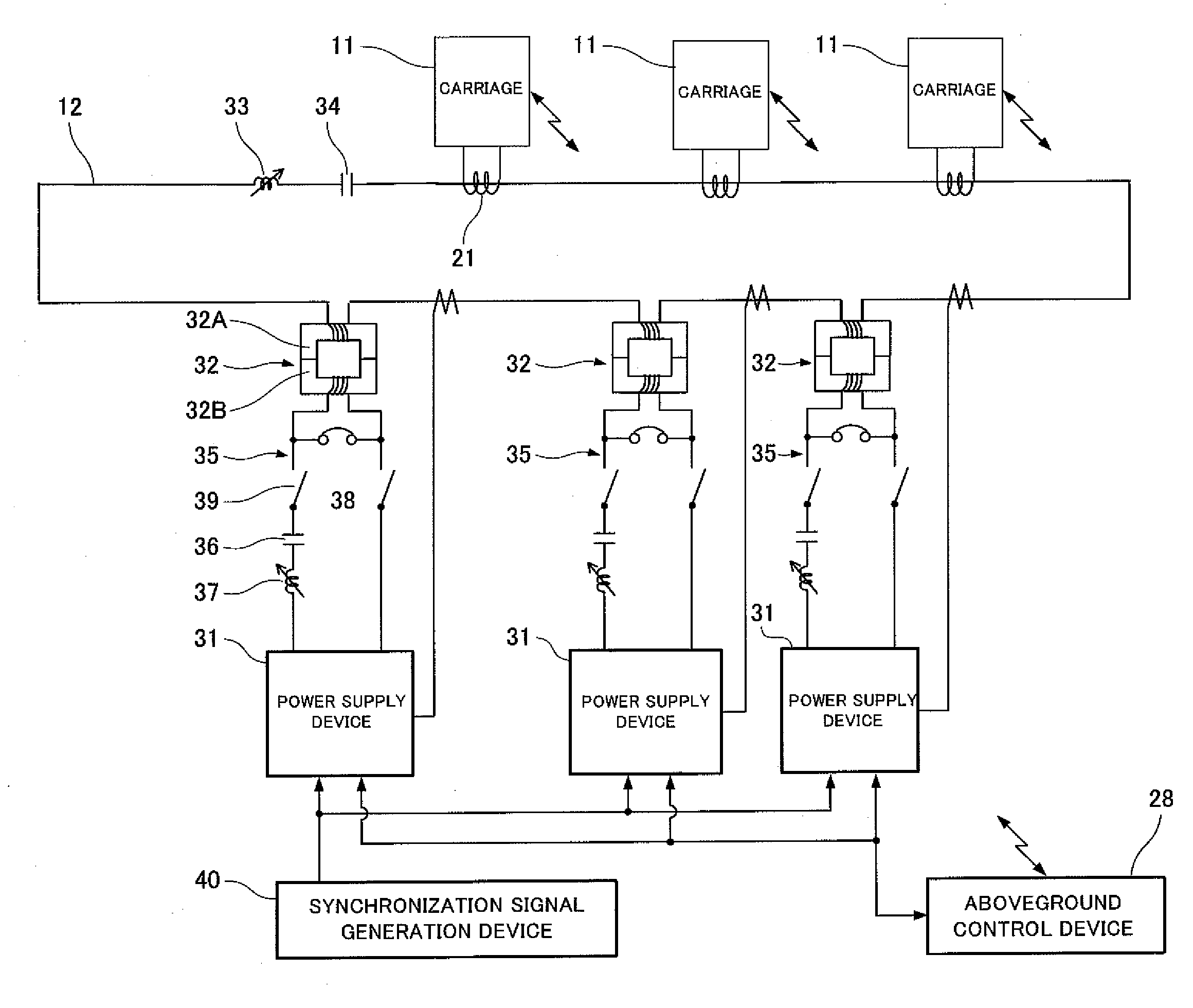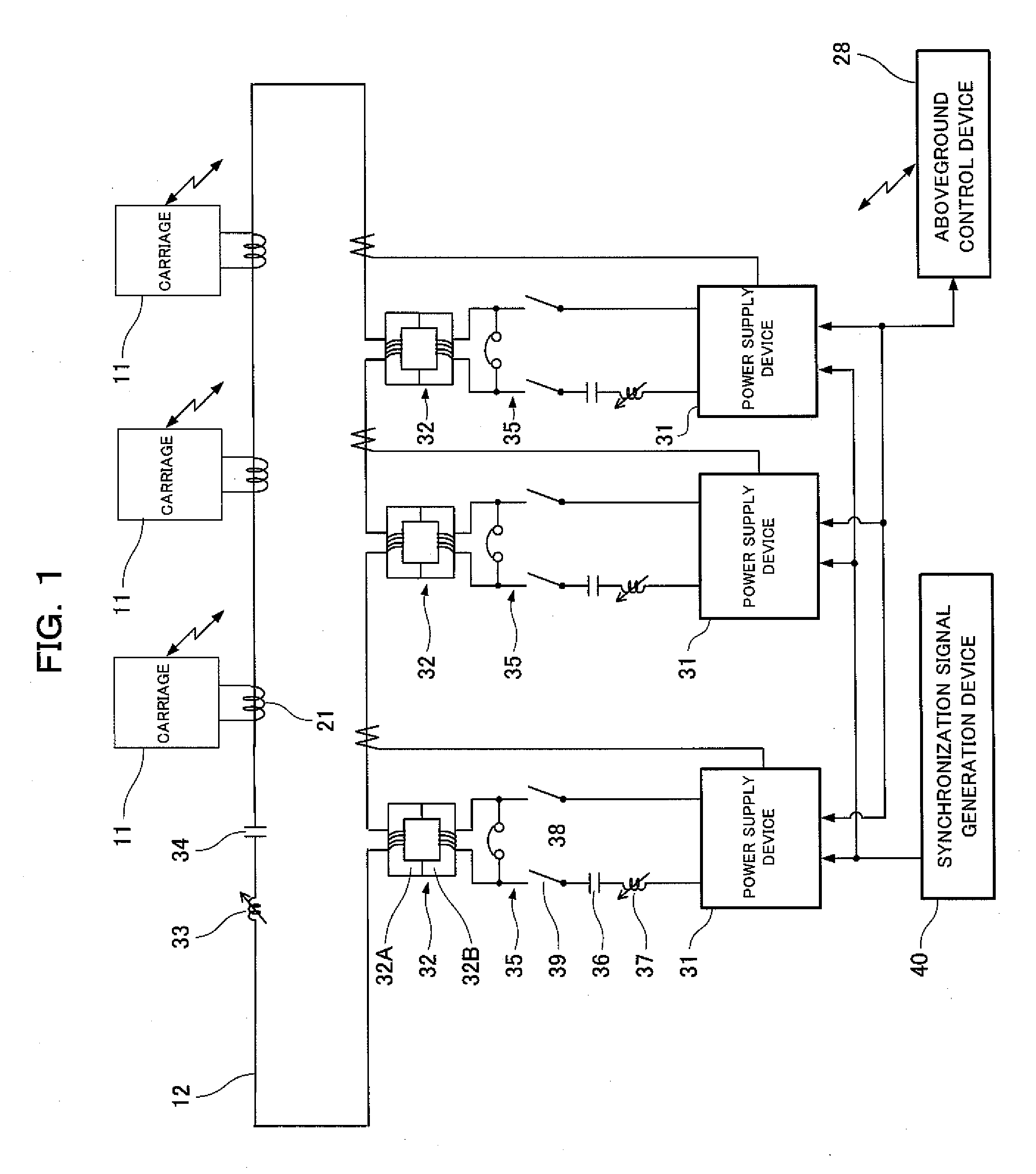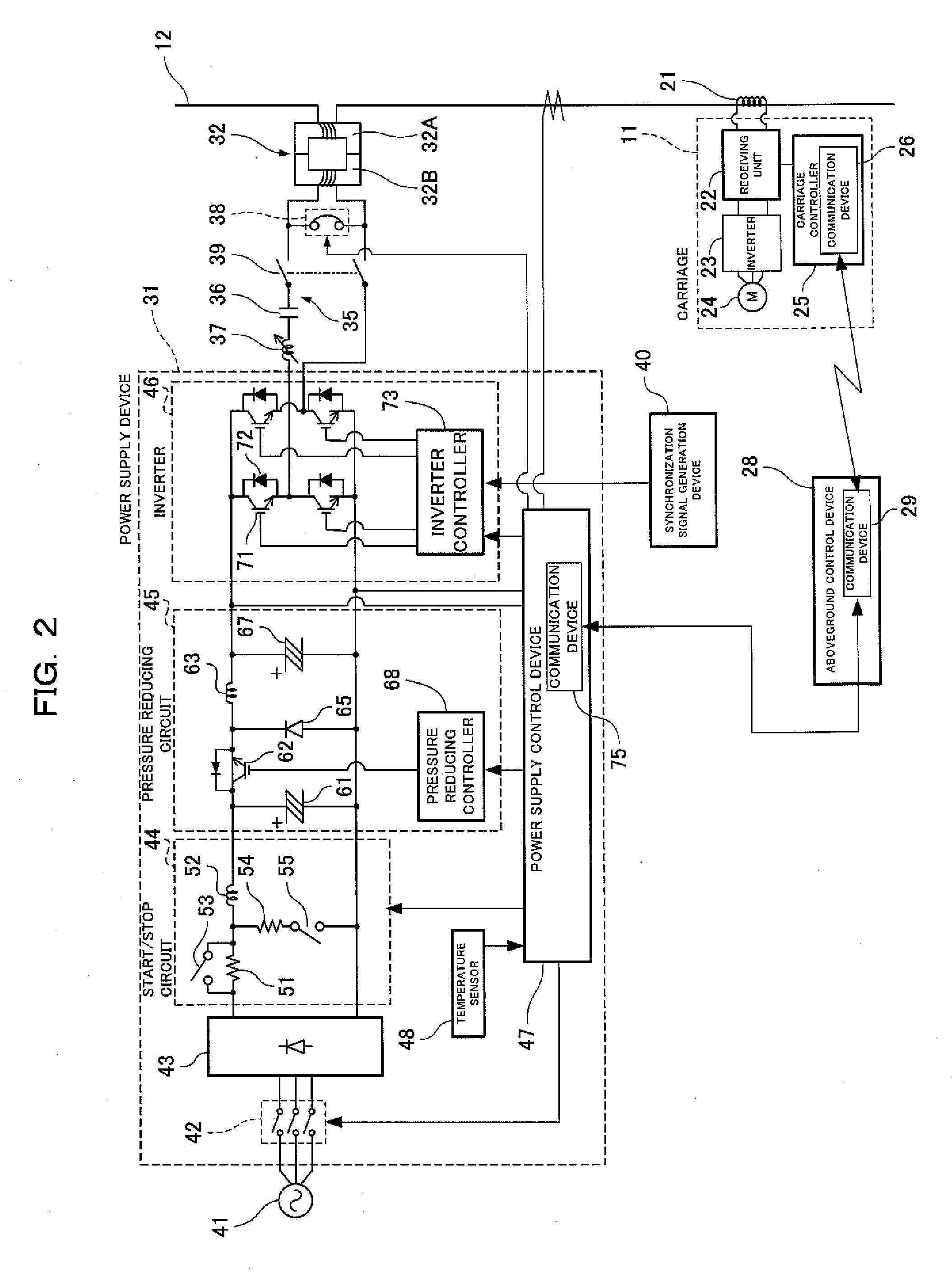Non-contact power feeding apparatus
a technology of power feeding apparatus and non-contact, which is applied in the direction of parallel operation of dc sources, transportation and packaging, rail devices, etc., can solve the problems of wasting power, difficulty in maintaining the stopping power supply device at ease, and the carriage may immediately run out of power, so as to reduce the risk of power feeding stop and save energy
- Summary
- Abstract
- Description
- Claims
- Application Information
AI Technical Summary
Benefits of technology
Problems solved by technology
Method used
Image
Examples
embodiment 1
[0016]FIG. 1 is a configuration diagram of a non-contact power feeding apparatus in Embodiment 1. The non-contact power feeding apparatus supplies power to a plurality of carriages (an example of an object to which power is to be supplied) 11 in a non-contact manner, and a feeder 12 that supplies a constant current of a predetermined frequency f (for example, 10 kHz) is laid along a path of the carriages 11.
“Carriage”
[0017]As shown in FIG. 2, the carriage 11 includes a receiving coil 21 in which an electromotive force is induced by the feeder 12. A receiving unit 22 is connected to the receiving coil 21, a drive motor (an example of a load with varying power consumption) 24 for causing the carriage 11 to travel is connected to the receiving unit 22 via an inverter 23, and power is supplied to the drive motor 24 by the electromotive force induced in the receiving coil 21. The carriage 11 also includes a controller (carriage controller) 25 for controlling traveling of the carriage 11,...
embodiment 2
[0068]As shown in FIG. 6, in a non-contact power feeding apparatus according to Embodiment 2 of the present invention, the short-circuit switch 38 and the manual switch 39 in Embodiment 1 are not required, and further, a circuit including a transmission coupler 32B, a capacitor 36, and a reactor 37 connected in series is a series resonant circuit (zero impedance) at a predetermined frequency f.
[0069]When a power supply device 31 is separated from a feeder 12, instead of a short-circuit switch 38 being short-circuited, an inverter controller 73 controls so that among switching elements 71 of an inverter 46, two upper switching elements 71 connected to a positive side of a DC current are not brought into conduction, but two lower switching elements 71 connected to a negative side of the DC current are brought into conduction of 180° according to a synchronization signal. When the switching element 71 is thus driven, no current flows from a pressure reducing circuit 45 as shown in FIG....
PUM
 Login to View More
Login to View More Abstract
Description
Claims
Application Information
 Login to View More
Login to View More - R&D
- Intellectual Property
- Life Sciences
- Materials
- Tech Scout
- Unparalleled Data Quality
- Higher Quality Content
- 60% Fewer Hallucinations
Browse by: Latest US Patents, China's latest patents, Technical Efficacy Thesaurus, Application Domain, Technology Topic, Popular Technical Reports.
© 2025 PatSnap. All rights reserved.Legal|Privacy policy|Modern Slavery Act Transparency Statement|Sitemap|About US| Contact US: help@patsnap.com



